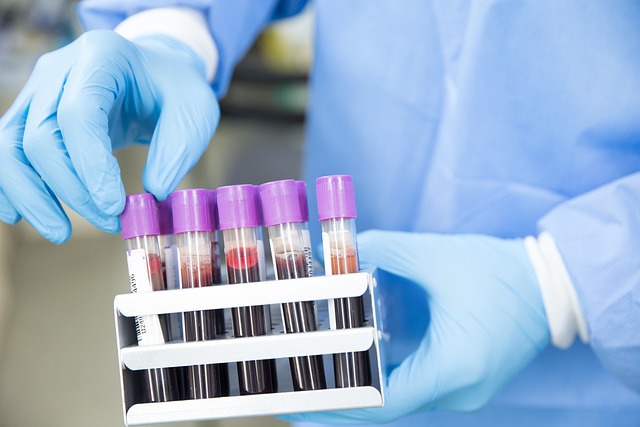Iron deficiency anemia, a common blood disorder causing fatigue and weakness, is often undetected until revealed through standard thyroid blood tests in the UK. These tests measure hormones T3 and T4, which regulate metabolism and red blood cell production, aiding in accurate diagnosis. Interpreting test results shows low iron levels (indicated by hemoglobin, haematocrit, and ferritin) leading to symptoms like pale skin and shortness of breath. Consulting a healthcare professional determines next steps, including lifestyle changes or oral/injected supplements, for effective anemia management.
In the UK, iron deficiency anaemia (IDA) is a common condition, often overlooked yet easily treatable. This guide delves into the world of IDA testing using blood tests, a standard procedure in the UK. Understanding symptoms like fatigue and pale skin is crucial for early detection. We explore the role of thyroid blood tests, which can help diagnose underlying causes, as IDA sometimes correlates with thyroid issues. By interpreting test results, individuals can take informed steps towards recovery.
- Understanding Iron Deficiency Anemia and Its Symptoms
- The Role of Thyroid Blood Tests in Diagnosis
- Interpreting Results and Next Steps
Understanding Iron Deficiency Anemia and Its Symptoms
Iron deficiency anemia is a common blood disorder where the body lacks enough healthy red blood cells, which are responsible for carrying oxygen throughout our bodies. This condition often results from iron deficiency, typically caused by inadequate intake or absorption of iron. In the UK, a standard thyroid blood test might reveal this hidden issue.
Symptoms can vary but often include fatigue, weakness, pale skin, shortness of breath, dizziness, and headaches. Those with severe anemia may experience faster heartbeats or chest pain. It’s important to recognize these signs, as early detection through a simple blood test like the UK Standard Thyroid Blood Test can lead to effective treatment and management.
The Role of Thyroid Blood Tests in Diagnosis
In addition to assessing overall red blood cell health, thyroid blood tests play a crucial role in diagnosing iron deficiency anemia in the UK. These tests measure levels of thyroid hormones, such as T3 and T4, which are essential for regulating metabolism and the production of red blood cells. An imbalance in these hormones can lead to anemia symptoms, often masking underlying iron deficiency.
A standard UK thyroid blood test evaluates these hormone levels, providing valuable insights into potential thyroid-related causes of anemia. This is particularly important as concurrent thyroid disorders, like hypothyroidism or hyperthyroidism, can complicate the diagnosis and treatment of iron deficiency anemia. By incorporating thyroid blood tests as part of a comprehensive assessment, healthcare professionals in the UK can ensure more accurate identification and management of this common nutritional disorder.
Interpreting Results and Next Steps
Interpreting your Iron Deficiency Anemia test results is a crucial step in understanding your health status. A UK Standard Thyroid Blood Test typically measures various levels, including haemoglobin (Hb), haematocrit (Hct), and ferritin. If your iron levels are low, it indicates possible anemia. Haemoglobin is a protein that transports oxygen around the body, so a deficiency can lead to fatigue and weakness. The next steps involve consulting a healthcare professional who will assess your results in conjunction with other symptoms you may be experiencing. They might recommend further tests or suggest lifestyle changes and dietary adjustments to increase iron intake. Treatment options include oral supplements or, in more severe cases, injections.
Iron deficiency anemia can often be diagnosed through a combination of symptoms assessment and blood tests, including the UK standard thyroid blood test. By understanding the role of key markers like ferritin and hemoglobin levels, individuals can take informed steps towards management and treatment. If you suspect an issue, consulting with a healthcare professional is crucial for accurate interpretation of results and personalized guidance on the next steps.
